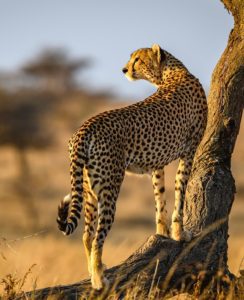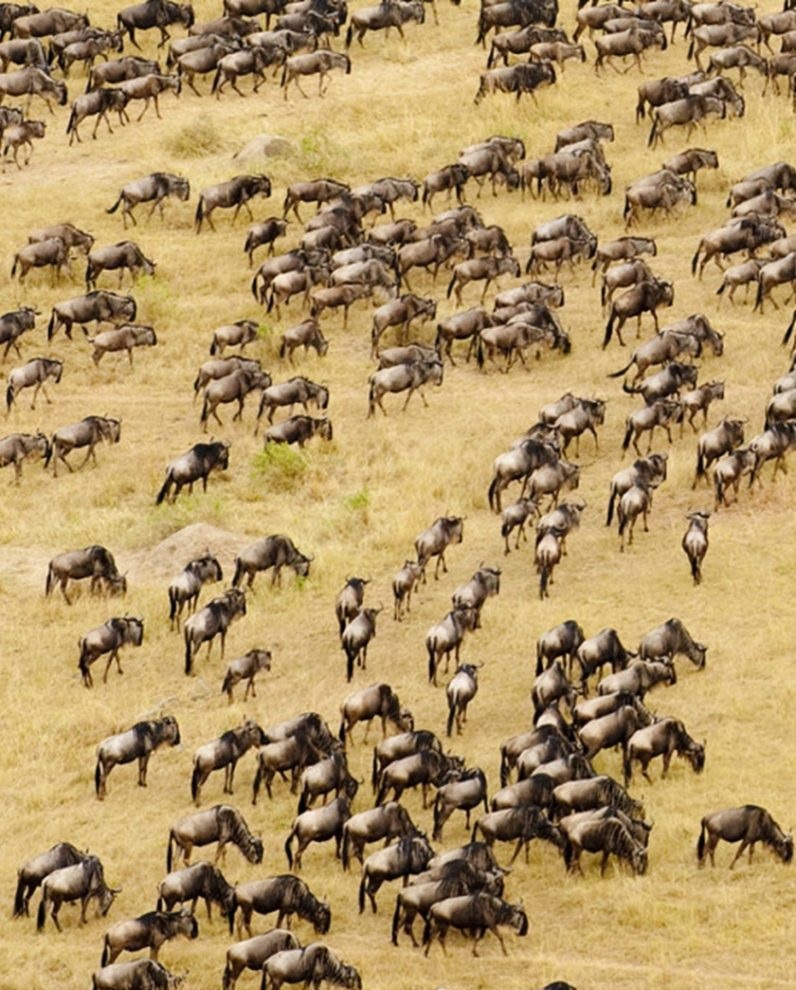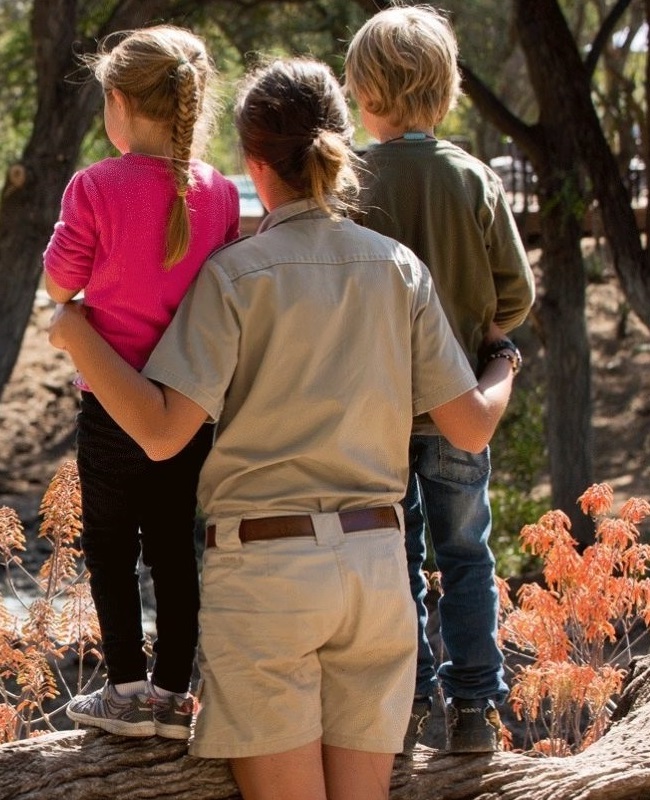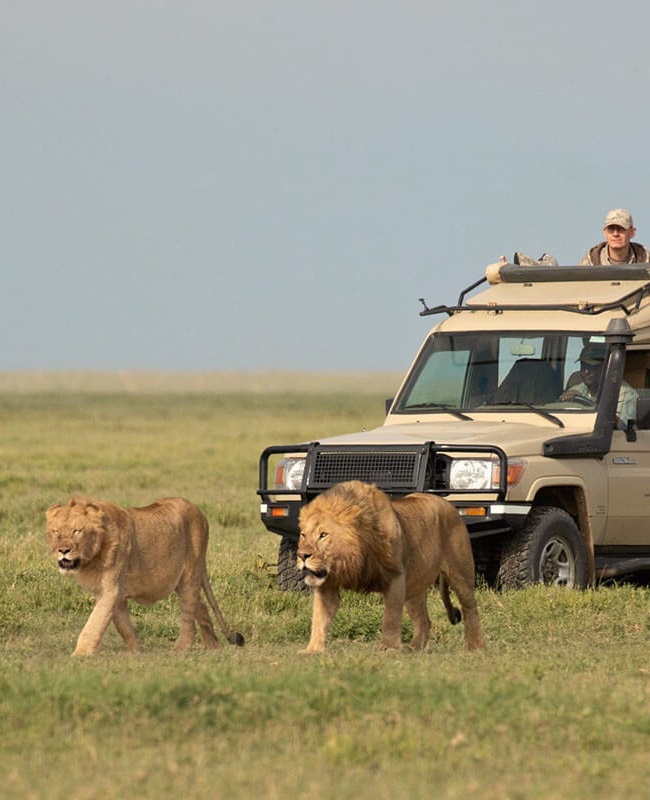Ndutu Migration Adventures
8 Days from $3830 per person
Limited to guests
Included With Every Luxury Small Group Journey
Witness the Ndutu Migration as you go on a migration safari in the Serengeti calving season. One of nature’s most interesting adventures. Furthermore, the Ndutu migration in Ngorongoro and the Serengeti attracts about 2 million herbivores. Many animal lovers refer to the period between the end of the rutting season in the great Serengeti plains in May and June when the wildebeest migration is at the Grumeti area getting ready to move to the river Mara because millions of wildebeest and thousands of zebras take part in the annual Ndutu migration.
By December, the wildebeest migration had started to move southward to the southern (Ndutu) Serengeti to graze on the short, green grasses of the plains. The calving season that happens during Ndutu Migration in late January and early February is arguably Serengeti’s most impressive event.
The Ndutu Migration takes place amid the southern Serengeti National Park. But also takes plan in northern Ngorongoro and puts on an incredible show every year. About 8,000 calves are born every day from late January to mid-March. Few experiences can match seeing a newborn wildebeest take its first steps and begin running.
The spectacular Serengeti National Park is where the Ndutu Migration takes place in the southern Serengeti, which puts on a spectacular performance every year. Every day from late January through mid-March, 8,000 wildebeest calves are born! Nothing more breathtaking than watching a newborn wildebeest take its first steps and begin running. All this will be witnessed, in the Ndutu migration safari in southern Serengeti.
The Ndutu Migration in detail:
When planning your Migration safari, we advise you to include seeing the Calving season during Ndutu Migration.
The annual migration of two million ungulates including wildebeest, zebra, and gazelle eland. But also, elands become the temporary residents in the southern Serengeti Ndutu area. They stay here for two months then they head to the north. Although variations occur from year to year. The Ndutu migration follows a reasonably predictable annual cycle, dictated by local rainfall patterns.
The primary calving grounds are located southeast of Seronera. Where typical Serengeti grasslands extend to the Ndutu region close to Ngorongoro. The short rains in November and December trigger their move to this area.
During the Ndutu Migration, the wildebeest stick around this area until the end of the long rains. Which means the end of April or early May. The delightful news is that this section of the southern Serengeti is easily accessible and that during this period the landscape becomes lush.
February is usually the calving season in the Ndutu area and the southeastern plains; this is the very best time to witness the Ndutu migration. As wildebeest, zebra, and other ungulates are so numerous and give birth to so many calves, the spectacle works as a magnet for predators.
As early as March or April, the herd may move again in search of greener pastures. Although it is more challenging to see the actual migration during this time, there is a good probability that you will come across quite huge herds traveling. For further details regarding migration read our article about wildebeest migration and calving season.
Tarangire National Park
Pick up at 8:30 AM from your hotel in Arusha and depart for Tarangire National Park with a picnic lunch for a full-day game drive. The huge baobab trees that dot the landscape of Tarangire National Park dwarf the animals that feed under them. This park, which is known for having some of the largest elephant populations in Africa, is centered around the Tarangire River. Here, you might see lesser kudu, buffalo, oryx, eland, giraffes, zebra, lions, leopards, and cheetahs. You will return to your camp or lodge after the game drive, where a delicious dinner is waiting for you.
Ndutu Serengeti
After a delicious breakfast, you will begin your trip at 8 am, heading to the Ndutu area in southern Serengeti, and it’ll take us three hours to get there from our hotel in Karatu. You will enter the Ngorongoro Conservation Area (NCA) after about an hour of driving. As you continue, the landscape will change from mountainous woods to plains and lush meadows. You will start your game drive at Ndutu after a convenient break for your picnic lunch. Predators gather at the Ndutu area during the calving season so as to hunt the helpless baby wildebeest. Six large cat species—leopard, lion, cheetah, caracal, serval, and wildcat—are among the carnivores that reside in the Ndutu. The thrilling game drive will come to an end in the late afternoon, around 5 PM. You will now proceed to your chosen lodge, where a freshly prepared dinner awaits you. Make sure you get some rest and recharge your batteries before another eventful day.
Ndutu Serengeti
You get another chance to see the stunning wildlife spectacle today after being truly amazed by the previous day’s sighting of the migration. The magnificent Serengeti National Park and the Ngorongoro Conservation Area both include the Ndutu region. Either enjoy a leisurely breakfast, leave for full-day game drives at 9:00 AM with a packed lunch, and return to the lodge around 6:00 PM in the late afternoon. Alternatively, you might go on an early-morning game drive at 6:00 AM. Later, go back to your lodge for breakfast, unwind for a little, and then leave for a game drive in the afternoon with a packed lunch. Depending on where the migration is today, you will be following it. During game drives during the proper season, which is between December and April, you may observe the fertile plains transform into calving grounds and nurseries for the great migration. Predators in their numbers feed on the young, defenseless wildebeest during this season. The experience of witnessing life’s cycle unfold will create a lasting memory. The thrilling game drive will come to an end in the late afternoon, around 5 PM. Now you will proceed to the hotel accommodation of your choice, where a freshly made dinner is waiting for you. Before another eventful day, make sure you get some rest and recharge your camera and batteries.
Ndutu Serengeti
Today is your final opportunity to take in the breathtaking splendor of the southern Serengeti (Ndutu). You’ll be quite excited as you travel to the most renowned wildlife event in the southern Serengeti today. The exciting game drive for today will end just before sunset in the late afternoon. There is little doubt that seeing the Ndutu Serengeti ecosystem will leave you with long-lasting memories. Dinner and overnight stay will be waiting for you at your chosen hotel.
Central Serengeti
After a satisfying breakfast, you’ll set out for the Serengeti National Park, traveling through endless grassland plains. The name Serengeti, which translates to “endless plains” in the native African tongue, refers to the vast expanse of grassland that eventually merges with the sky in the distance. It is larger than we think it is, covering 14,763 square kilometers of land in total. The Serengeti is home to the majestic “Big 5” as well (elephant, rhino, buffalo, lion, and leopard). A particularly pleasant sighting would be the impala, one of Africa’s most stunning creatures, in addition to the “Big 5”. The Serengeti ecosystem is home to the majority of Africa’s remaining plains wildlife. The Serengeti “kopjes,” which are enormous granite rocks resting in a sea of grass, are a must-see. A wide range of plants and animals can find plenty of refuge in them. During the day-long game drive itself, a picnic lunch will be served. A hearty dinner and a restful night in your lodging bring the eventful day to a close.
Central Serengeti
You can either enjoy a leisurely breakfast before leaving at 9:00 AM for full-day wildlife drives with a packed lunch and return to the lodge at about 6:00 PM in the late afternoon. Alternatively, you might go on an early-morning game drive at 6:00 AM. Later, return to your lodge for breakfast, rest for a while, and then leave for a game drive in the afternoon with a packed lunch. Today, you will explore the Serengeti central Serengeti National Park. Due to its huge concentration of lions and leopards, the iconic Serengeti National Park is the most well-known safari destination. One of the park’s richest wildlife habitats is the Serengeti’s central region, called the Seronera. Either enjoy a leisurely breakfast, leave for a full day of game viewing at 9:00 AM with a packed lunch, and return to the lodge at about 6:00 PM. Alternatively, you could leave at 6 AM for a morning game drive. Afterward, return to the lodging for breakfast, unwind a little, and then leave for an afternoon game drive with a packed lunch. The central Serengeti will be your focus today. The most well-known safari destination is the legendary Serengeti National Park, with its extraordinary concentration of lions and leopards. One of the park’s most diverse wildlife habitats is found in the central Serengeti, also referred to as the Seronera area.
Central Serengeti - Ngorongoro Crater
A morning game drives through Serengeti National Park will take place after breakfast. Take a picnic lunch and, thereafter, head for the Ngorongoro Conservation Area. With fourteen kilometers of isolated natural splendor, Ngorongoro Crater is the world’s largest collapsed volcanic crater. Around 30,000 animals live inside the Ngorongoro Crater, which is ringed by ancient volcanoes. The floor is also home to so many water holes. The eventful day has come to an end with a hearty dinner and a restful night’s sleep in your lodge.
Ngorongoro Crater - Arusha
You’ll get an early start today. After a quick breakfast, you’ll begin an early descent into the crater floor at roughly 6:30 a.m. Ngorongoro is the world’s largest inactive, undamaged, and unfilled volcanic crater. Its floor size is enormous, spanning more than 260 square kilometers, and its depth is greater than 2000 feet. . The 5-hour game drive on the crater floor will provide plenty of opportunities to see animals in action. The camera should always be close at hand. Elephants, buffalo, black rhinos, hippos, hyenas, cheetahs, and lions can all be found in large numbers. You will begin an ascent to the rim of the crater after a picnic lunch at the magnificent Hippo pool. You will be heading to Arusha and dropped off at your hotel for dinner and the night or drive directly to the airport depending on your schedule.
| People | ||
|---|---|---|
|
2 pax
|
Per Person
|
$5312
|
|
4 pax
|
Per Person
|
$4044
|
|
6 pax
|
Per Person
|
$3830
|




